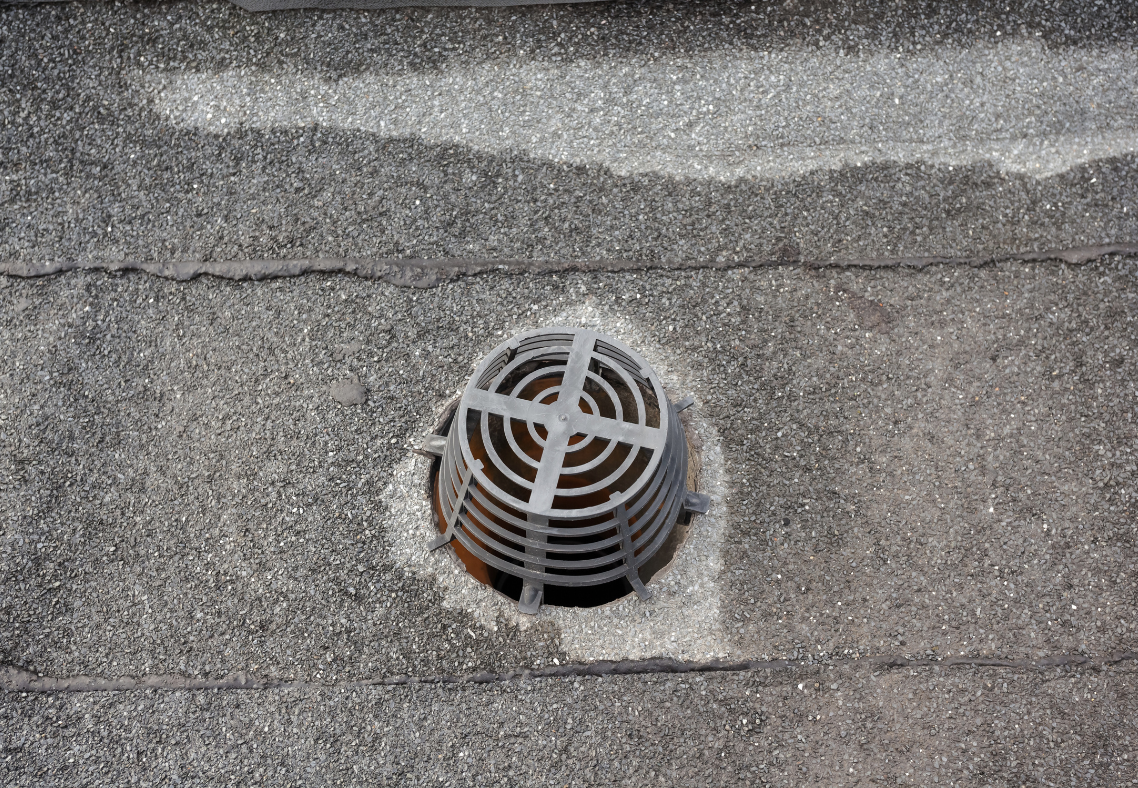How Do Flat Roofs Drain Water
Roof Right: Exterior Home Remodeling Specialists in Maryland Contact UsSchedule A Free EstimateWhen you’re considering a flat roof for your Maryland home, one of the most important questions you should ask is “How will it drain water?” Proper drainage isn’t optional with flat roofs—it’s absolutely essential. At Roof Right we serve homeowners across Maryland and have seen firsthand how flat-roof drainage systems either succeed or fail based on how well they shed water. In this article we’ll dive into how flat roofs drain water, the key components of a reliable drainage system, what Maryland-specific conditions to watch for, common drainage problems and how to prevent them. By the end you’ll understand what a top-quality flat roof installation requires and how to make sure your project is done correctly.
Answering The Question: How Do Flat Roofs Drain Water For Maryland Homes
Why Flat-Roof Drainage Matters In Maryland
Flat roofs may look simple, but their drainage challenges are real. Unlike steeply pitched roofs where water runs off quickly, a flat roof is only “flat” in name. In reality it must be engineered with a slight slope and well-designed drainage elements so that water doesn’t sit, pond or soak into the roof structure. When water remains on a flat roof for longer than 48 hours, it can lead to membrane deterioration, leaks, structural damage and even mold or rot inside your home. In Maryland the mix of humid summers, heavy storms, snow and ice makes proper drainage even more critical. If water isn’t managed well it can freeze, thaw, refreeze and exacerbate issues around seams and flashing. That means for homes in Maryland you want more than just a flat surface—you want a well-engineered drainage system built for your climate.
How Flat Roofs Drain Water: The Mechanics
Slight slope or “positive drainage”
Although called “flat,” these roofs almost always include a subtle slope which is typically around 1/4 inch per foot or as permitted by local code. That slope helps gravity move water toward designated drainage points. Because the slope is subtle, it’s easy for improper installation or structural settling to disrupt the drainage pattern. When the slope fails or dips occur, ponding forms and problems begin.
Drainage outlets: internal drains, scuppers and gutters
Flat roofs use several different types of drainage components:
- Internal drains: These are drains set into the roof surface, typically at low points. They channel water into a secondary piping system inside the building and out. These are common on larger buildings or those with parapet walls.
- Scuppers: These are openings or cut-outs in parapet walls that allow water to flow off the roof edge or into downspouts. Good for both residential and commercial flat roofs especially where internal drains may not work.
- Gutters and downspouts: On smaller flat roofs or those draining to the edge, gutters help collect water and move it away from the structure. While more common on pitched roofs, they do play a role for certain flat roof layouts.
The key point is that the drainage system must match the roof layout, slope and local rainfall conditions. If drains are placed incorrectly or the slope is wrong, water will pool rather than evacuate.
Membrane, insulation and deck integration
It’s not just about the drains. The roofing membrane, insulation and deck structure all factor into performance. For example, as one Maryland-based roofing provider notes, “tapered insulation is a reliable method for shaping the roof” and ensuring water flows to drains. If the insulation is flat, settles or compresses over time, drainage flow can slow or stop. Flashing around penetrations, membrane seams, and parapet walls must work in harmony with the drainage design. If the membrane is compromised or flashing fails, water may bypass the drainage points entirely.
Common Drainage Issues And How They Show Up In Maryland Homes
Because Maryland homes face specific weather and tree cover issues, certain drainage problems tend to occur more often. Here are common ones to watch:
- Ponding water: If you notice water remaining on the roof surface longer than 48 hours after a storm, that’s a sign of poor drainage. Ponding increases weight, stresses the membrane and can lead to failure.
- Clogged drains or scuppers: Leaves, twigs, debris from trees or granular roofing materials can block scuppers or internal drains. When that happens, water backs up and can seep under the membrane.
- Improper drain placement: If drains are installed on high points instead of low points, they won’t remove water efficiently. This often happens when the slope was not engineered or the deck has settled.
- Structural deflection or settling: Older decks may sag or shift over time. That creates pockets where water pools. In Maryland, homes with older flat roof additions or garage roofs are especially vulnerable.
- Membrane damage or aging: If the roof membrane is worn, punctured or cracked, water may redirect into areas not intended for drainage. Over time this undermines the system.
Best Practices For Designing And Maintaining Flat-Roof Drainage In Maryland
To ensure your flat roof drains properly and lasts for years, here are best practices tailored for Maryland homeowners:
- Ensure a positive slope: Even though the roof is flat-looking, a slope of 1/4 inch per foot or more is ideal to move water toward drains. Confirm the slope with your contractor and understand how it was achieved.
- Select appropriate drainage outlets: Match the drainage method to your roof layout: internal drains for large parapeted roofs, scuppers for moderate size, gutters for smaller ones. Verify the capacity for local storms.
- Keep drainage points clear: Regular maintenance matters. Clean scuppers, strainers, gutters and drains at least twice a year and after major storms. Maryland’s fall leaf fall and spring storms make this especially important.
- Use quality materials and workmanship: Roof membranes, flashing, insulation and drip edges must all integrate. Choose experienced contractors who understand Maryland climate conditions and flat-roof specifics.
- Install secondary overflow or emergency drainage: In case primary drains clog or storms exceed expected flow, a backup drain or oversized scupper can prevent ponding. Many flat roof failures happen during just those events.
- Schedule periodic inspections: Before and after major weather seasons check for sagging, ponding, boat-shapes, debris buildup. Early detection prevents extensive damage.
- Ensure proper tie-in with existing structure: If your flat roof sits over a garage, addition or home section, make sure it ties properly to walls, parapets and downspouts. One failed tie-point can compromise draining.
- Consider Maryland climate impacts: Between humid summers, leaf debris and winter ice melt, your drainage system must handle more than just rain. Make sure it is ready for freeze-thaw cycles and debris accumulation.
Contact Roof Right For Flat Roof Installations In Maryland
If you are in Maryland and you’re considering a flat roof installation or replacement, reach out to Roof Right today. We specialize in flat roof systems that are engineered for local climate conditions, and we make sure your drainage system is designed, installed and sealed properly. Whether you need a new flat roof for a garage, addition or full home section we can provide a detailed inspection, a drainage plan that ensures water moves off safely, and a complete installation that meets code. Don’t wait until you spot a leak, sagging deck or ponding water on your roof. Let Roof Right help you invest in a flat roof solution that works today and protects your home for years to come. Contact us now to schedule your consultation and take the first step toward a properly draining flat roof in Maryland.
Areas We Serve
If you're looking for a roof contractor in Maryland, give Roof Right a call today at (410)-374-5923 to schedule an appointment!
Carroll County
Howard County
Clarksville, Columbia, Elkridge, Ellicott City, Fulton, Jessup, Laurel, Woodstock
Montgomery County
Baltimore County
Baldwin, Bradshaw, Carney, Cockeysville, Glen Arm, Hunt Valley, Jacksonville, Kingsville, Lutherville, Nottingham, Overlea, Owings Mills, Parkton, Parkville, Perry Hall, Phoenix, Pikesville, Reisterstown, Sparks, Timonium, Towson, White Marsh

